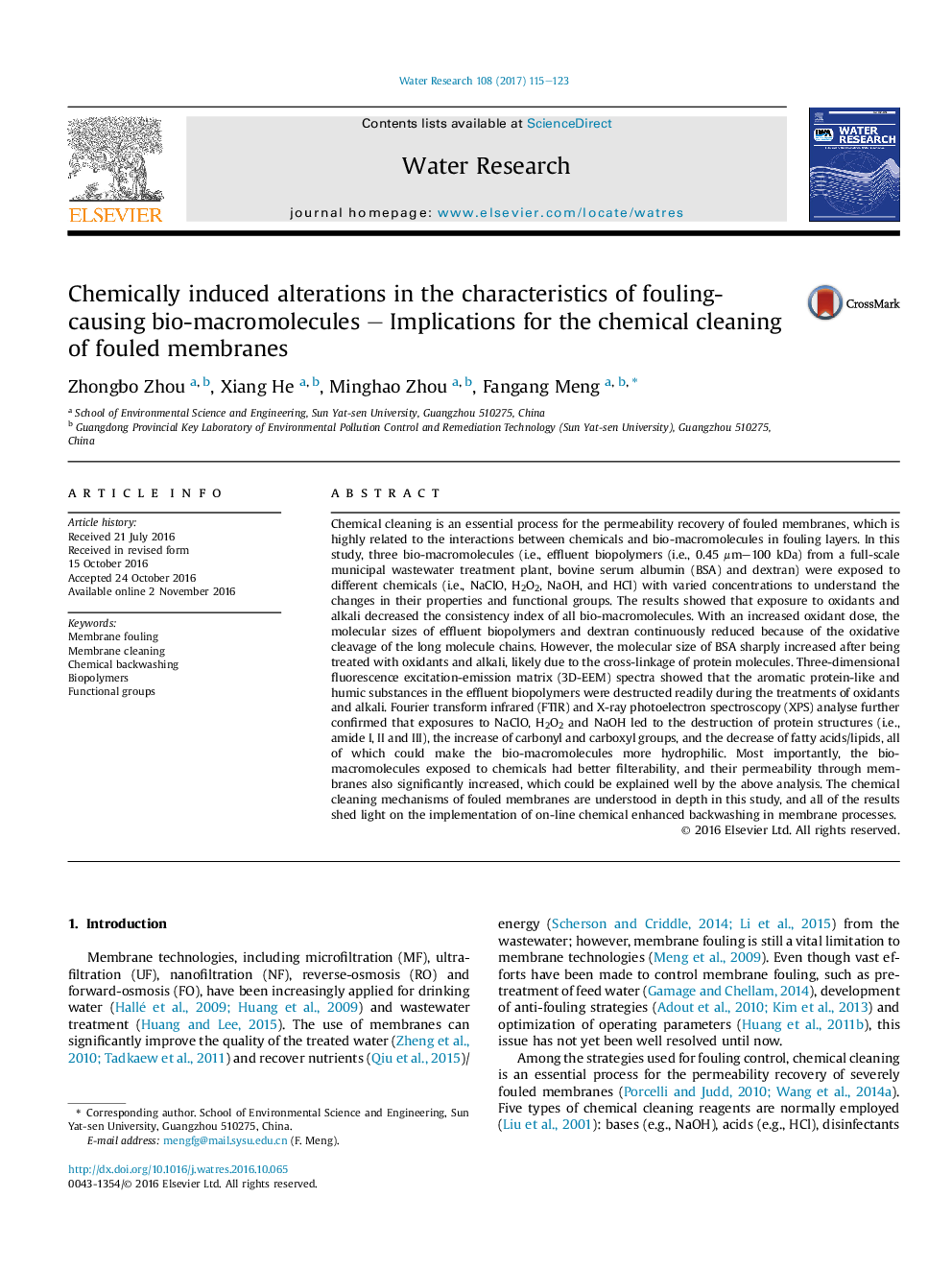| کد مقاله | کد نشریه | سال انتشار | مقاله انگلیسی | نسخه تمام متن |
|---|---|---|---|---|
| 5759557 | 1623060 | 2017 | 9 صفحه PDF | دانلود رایگان |
- Changes in properties and structures of bio-macromolecules exposed to chemicals were studied.
- Consistency index, size and zeta potential of treated bio-macromolecules varied differently.
- Oxidants/alkali treatments destructed proteins, increased CO groups, and decreased lipids.
- Filterability/permeability of bio-macromolecules was improved after exposed to chemicals.
- This work sheds lights on chemical cleaning mechanisms in membrane technologies.
Chemical cleaning is an essential process for the permeability recovery of fouled membranes, which is highly related to the interactions between chemicals and bio-macromolecules in fouling layers. In this study, three bio-macromolecules (i.e., effluent biopolymers (i.e., 0.45 μm-100 kDa) from a full-scale municipal wastewater treatment plant, bovine serum albumin (BSA) and dextran) were exposed to different chemicals (i.e., NaClO, H2O2, NaOH, and HCl) with varied concentrations to understand the changes in their properties and functional groups. The results showed that exposure to oxidants and alkali decreased the consistency index of all bio-macromolecules. With an increased oxidant dose, the molecular sizes of effluent biopolymers and dextran continuously reduced because of the oxidative cleavage of the long molecule chains. However, the molecular size of BSA sharply increased after being treated with oxidants and alkali, likely due to the cross-linkage of protein molecules. Three-dimensional fluorescence excitation-emission matrix (3D-EEM) spectra showed that the aromatic protein-like and humic substances in the effluent biopolymers were destructed readily during the treatments of oxidants and alkali. Fourier transform infrared (FTIR) and X-ray photoelectron spectroscopy (XPS) analyse further confirmed that exposures to NaClO, H2O2 and NaOH led to the destruction of protein structures (i.e., amide I, II and III), the increase of carbonyl and carboxyl groups, and the decrease of fatty acids/lipids, all of which could make the bio-macromolecules more hydrophilic. Most importantly, the bio-macromolecules exposed to chemicals had better filterability, and their permeability through membranes also significantly increased, which could be explained well by the above analysis. The chemical cleaning mechanisms of fouled membranes are understood in depth in this study, and all of the results shed light on the implementation of on-line chemical enhanced backwashing in membrane processes.
366
Journal: Water Research - Volume 108, 1 January 2017, Pages 115-123
